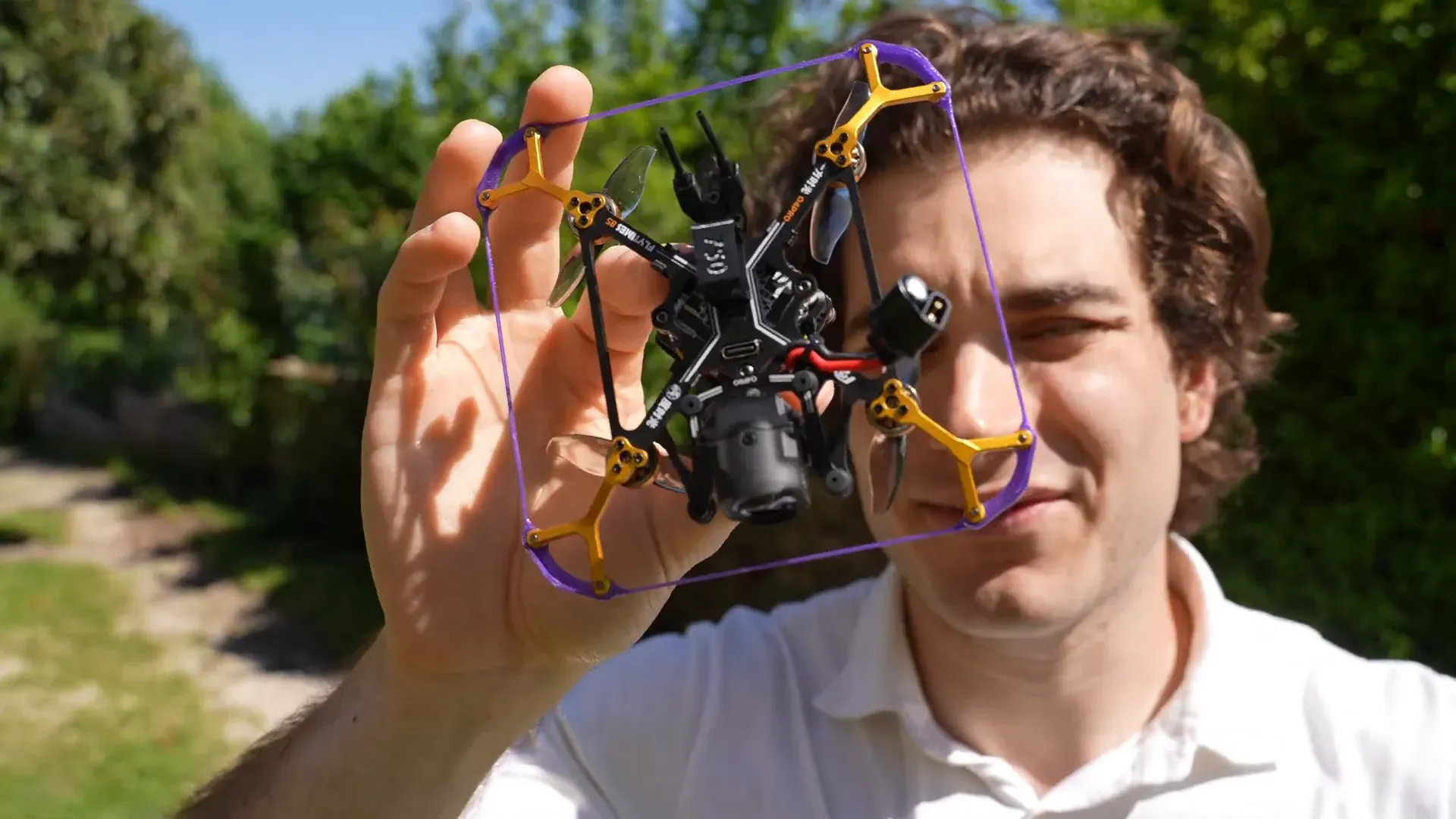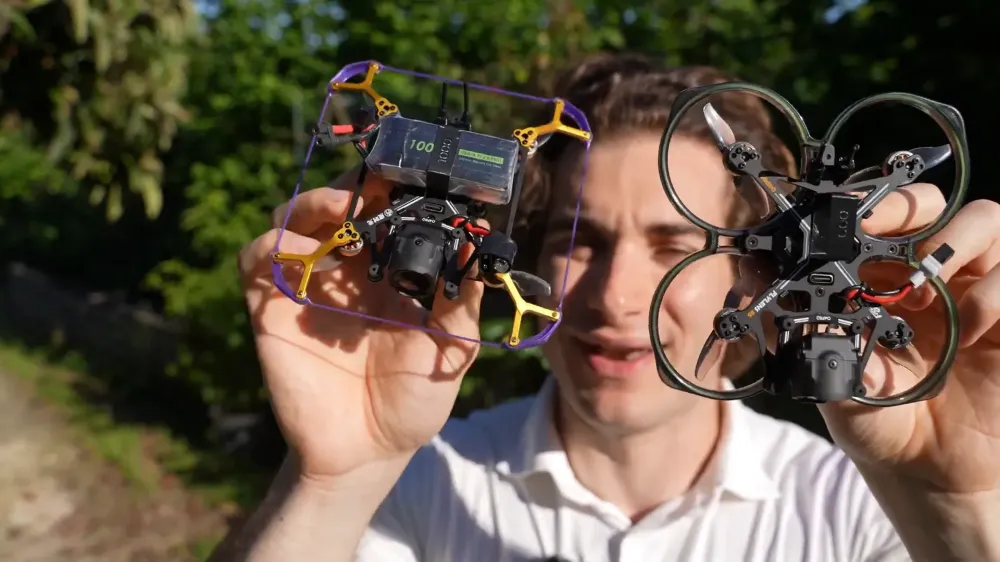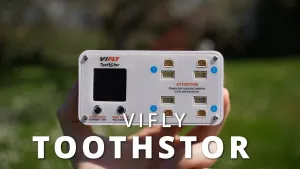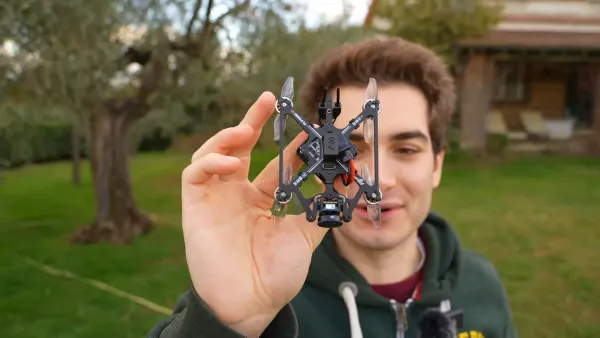
The Flywoo FlyTimes 85 is a remarkable entry in the world of 2S micro DJI O4 Pro cinematic FPV drones, blending the best features of a Cinewhoop and a Toothpick. This lightweight drone promises improved performance over its predecessor, the FlyLens, making it a compelling choice for both casual and serious drone enthusiasts.
TL;DR
- Flywoo FlyTimes 85 offers improved camera and flight tuning.
- Weighs only 74 grams, potentially sub-100 grams with the right battery.
- Features a soft mount for the O4 system to eliminate jello in footage.
- Ideal for outdoor flying with better wind resistance than FlyLens.
- Battery mounting system may require some getting used to.
Unboxing the Flywoo FlyTimes 85
Upon unboxing the Flywoo FlyTimes 85, you’re greeted with a robust accessory bag, a neatly packaged drone, and standard paperwork. The accessory bag includes a USB-C cable, various battery mounting adapters, landing pads, an extra propeller guard, and a Phillips screwdriver. The attention to detail is evident, especially for those who appreciate a well-organized setup.

Specifications That Matter
The FlyTimes 85 resembles its O3 predecessor but features a wider camera mount for the O4 Pro system. Weighing in at 74 grams, it’s about 10 grams lighter than the FlyLens 85. With the right battery, you can achieve a sub-100 gram weight, which is a significant advantage for those looking to comply with specific regulations.

Build Quality and Design
This drone sports a 2mm carbon fiber frame that is both lightweight and resilient. The propeller guards are made from 3D-printed TPU, allowing customization in color. Despite its delicate appearance, the drone can withstand a few crashes, though it’s not designed for heavy impacts. The soft mount for the O4 system is a standout feature, ensuring stable footage even in challenging conditions.

Flight Performance
Equipped with O3 14,000 kV motors and a flight controller with a 12 amp ESC, the FlyTimes 85 boasts impressive performance metrics. The inclusion of a 9V battery eliminator circuit means the O4 system remains powered, even when battery voltage drops during flight. This is a crucial feature for avoiding unexpected camera shutdowns, particularly during critical shots.

Battery Options and Efficiency
The drone supports various battery capacities—550 mAh, 750 mAh, and 1000 mAh—allowing pilots to choose between agility and flight time. The 550 mAh battery offers the least flight time but the most agility, while the 1000 mAh provides a more stable experience with extended flight durations. Users noted that the 1000 mAh battery seemed to offer the best balance of performance and endurance.

Flight Tests: Real-World Insights
During test flights, the FlyTimes 85 demonstrated significantly reduced noise levels compared to the FlyLens 85. The drone's stability was impressive, with minimal jello effects in footage, thanks to the effective soft mount. The drone proved to be more silent than expected, enhancing the flying experience, especially in populated areas.

Handling and Control
The drone’s handling is responsive, though it may require some tuning for new pilots. The controller settings, including expo adjustments, can make a significant difference in flight performance. Users noted that with a bit of practice, the FlyTimes 85 could be very enjoyable to fly, especially for those transitioning from heavier drones.

Ideal Use Cases
The FlyTimes 85 shines in outdoor environments, particularly in windy conditions. Its lightweight design allows for better performance against the elements compared to the FlyLens. However, for indoor flying, the FlyLens still holds an edge due to its protective design. If your focus is outdoor cinematography or capturing dynamic shots, the FlyTimes 85 is an excellent choice.

Final Thoughts: FlyTimes 85 vs. FlyLens
Choosing between the FlyTimes 85 and the FlyLens 85 boils down to your flying style and environment. The FlyTimes excels outdoors with its agility and efficiency, while the FlyLens offers more protection for indoor flying. Both drones are top-tier options, but the FlyTimes 85 may appeal more to experienced pilots looking for a lightweight, agile drone.

Takeaway Box
- Flywoo FlyTimes 85 offers improved flight performance and reduced noise.
- Lightweight design allows for sub-100 gram configurations.
- Ideal for outdoor flying, especially in windy conditions.
- Battery mounting system may require adaptation for some users.
- Choose FlyLens for more indoor-focused flying.
FAQs
What are the main differences between FlyTimes 85 and FlyLens 85?
The FlyTimes 85 is lighter and more agile, making it better for outdoor flying, while the FlyLens offers more protection and is better suited for indoor environments.
How does the battery performance vary between the different capacities?
The 550 mAh battery provides the most agility but the least flight time, while the 1000 mAh battery offers longer durations and smoother handling.
Is the FlyTimes 85 suitable for beginners?
While it can be flown by beginners, the FlyTimes 85 is best suited for those with some FPV experience due to its agility and responsiveness.
For further insights on drone regulations and building your own FPV drone, check out our articles on UK Drone Regulations and Building a Mini FPV Quadcopter.
This article was based from the video DJI O4 Pro Flywoo Flytimes or Flylens 85 – What's Best for You?





